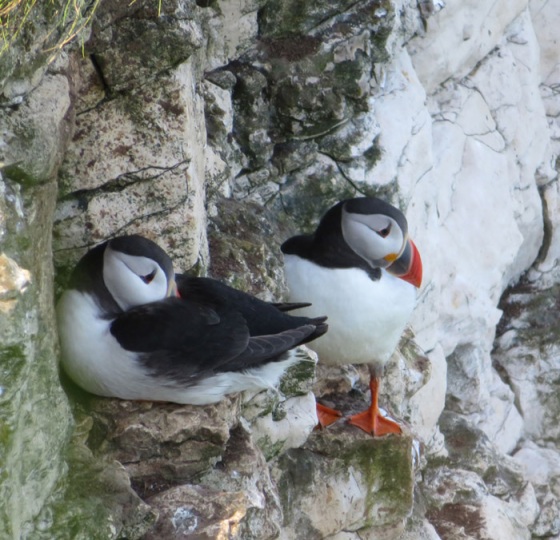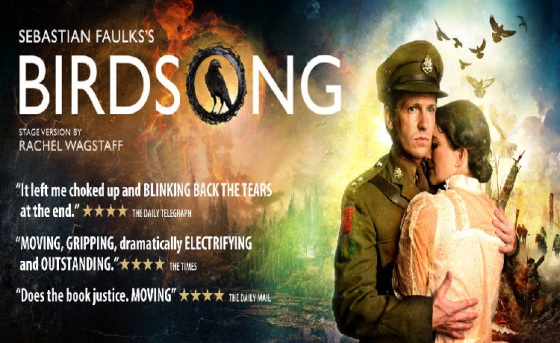
Yes, it’s that quadrennial celebration when every screen is set to shades of green as football dominates and disrupts the embedded drinking patterns of all.
However, before the football madness began, there was plenty of time for a little nature and some wild spaces to be indulged.
It is often a two-fleece job whenever a visit to Yorkshire is planned so we were very lucky to plunder three excellent sunny days for ourselves in Bridlington.
A minor sea fishing port with a working harbour, Bridlington is a great base from which to explore the wild and not-so-windy-this-time recesses of Yorkshire.
Fairburn Ings was well worth dipping into on the way up from Brum. The word ‘ings’ is of Old Norse origin meaning ‘damp or marshy land that floods’ so that gives you an idea of this nature reserve – plenty of flood meadows, fenland, some reedbeds and a fair chunk of woodland. The Ings got the weekend off to a fine start with stunners such as Hobby, Black-necked Grebe, nesting Spoonbills and a Cuckoo.
There was also a collection of Cuckoo Wasps, scribbling their way around an old dead tree. These were Ruby-tailed Wasps or Jewel Wasps – common monikers for what are formally known as Cuckoo Wasps which, like their avian namesake, plunder the nests of other species. The resulting larvae eat the egg or larvae of the host – not the sort of guests you want to invite over for cocktails.

From Bridlington, it is a short zip up to the awe-inspiring Bempton Cliffs, a veritable seabird city with Gannets and Guillemots galore, neat little Razorbills and Kittiwakes, whirling Fulmars, and everyone’s favourite, Puffins – all thumbed tightly into dizzy notches and nicks on the towering chalk cliff faces.

There are excellent viewing platforms arranged along the cliffs at various points for some of the most spectacular seabird viewing in the country. Nearly half a million seabirds don’t know the meaning of the word ‘quiet.’




Razorbills and Puffin

Kittiwake

Razorbill and Guillimot
The hypnotic sight (and smell) of the various colonies, with additional gulls and jackdaws is mesmerising at times, a bit like watching the sea – until you realise you are actually watching the sea as well.

Even more senses can be overloaded with a stirring yomp over the cliffs to Flamborough Head for more of the same.





Tophill Low was a surprisingly good find over the weekend. Tucked away off one of the main roads, this reserve is an active Yorkshire Water Treatment Works built in 1959. It opened its doors as a Nature Reserve in 1993 and features several hides spread across two main reservoirs that flank the River Hull.
The two reservoirs – ‘D’ and ‘O’ dominate an area peppered with substantial marshes, ponds, woodlands and grasslands.
A Great-spotted Woodpecker was a great spot from the first hide, as were the Yellow Wagtails, but the most memorable sighting of the day were the Marsh Frogs.
These are large non-native species, frog-marching their way up the country from Romney Marshes. It was their incredible booming croak – they are also known as the Laughing Frog – that was difficult to pin down at first. A couple of male frogs were soon spied, rattling their sabres at each other across a small pond.
Here’s a little clip from YouTube so you can appreciate the crazy volume of these amphibians (filmed by Anna Benson Gyles):
…And here’s a froggy cartoon from the Crow Collection – a best seller in its day:

Blacktoft Sands is another great little reserve on the Humber estuary, and one we often visit when up in Yorkshire. The vast tidal reedbed is the largest in England, a haven for many species of wildlife, and it wasn’t long before some lofty Marsh Harriers heaved themselves into the air and began scanning the reeds for snacks. We once saw a harrier take a gull chick from its nest at this reserve so were hopeful of a replay but nothing doing.
Blacktoft Sands also has saline lagoons, which are rare in Europe and provide an ideal habitat for a variety of leggy wading birds including the ever-elegant Avocets.

There were more leggy shenanigans later in the month when the fell-walking crew took to the Staffordshire Moorlands for a brisk circuit.
Fortunately, Adrian L was on board to provide his inexhaustible commentary:
Start at Hulme End, Staffordshire Moorlands
Location: Grid Ref: SK 1062 5927
From the car park, we walk for a mile along the route of the railway. Then go up Ecton Hill. Information points on way up about the mining that has occurred there since the Neolithic ages.
Nice views. Then we come down Ecton Hill and through a bit of a gorge (Wetton Mill). Nice views. Then we go up another hill. Nice views. Then we go down the hill. Nice views. Then we walk along the Hoo Brook for a while until we get to Butterton, which is on the side of a hill. Then we go to the Black Lion Inn on top of that hill. The pub does not mind dogs coming in. It’s the owners they sometimes have an issue with and may get ordered out. After the pub, we go down the other side of the hill. Nice views. Then we go up another hill. Nice views. Eventually reaching Revidge Moor – nice views. Then we go off that hill back to the car park.
Some of you have not been happy in the past about not being told if there is any mud. If there has been rain do not be surprised if there is mud. That usually happens when it rains.
Cheers, Adrian, for a very singular take on this month’s wanderings.

Heather Watson Wellies It
In between various World Cup kick-offs, there was a series of supporting events to enjoy:
The Nature Valley Classic at the Edgbaston Priory Club – for a long time an annual event for us – again shocked with the lack of rain – that’s two years running now.

Pat Cash gets to meet Steve P

Steve P took his first ever selfie with tennis idol, Pat Cash, and the scene was set for some seemly sets. Here was the order of play and results:
Elina Svitolina beat Donna Vekic 6-1, 3-6, 6-1
Lesia Tsurenko beat Heather Watson 7-6, 7-5
Petra Kvitova beat Johanna Konta 6-3, 6-4
Garbine Muguruza beat Anastasia Pavlyuchenkova 6-1, 6-2
This seems just the place to serve up another silly toon:

The novel Birdsong by Sebastian Faulks was one of the must-read books of the last ten years. The Alexandra Theatre was showing the critically acclaimed stage show based on the novel, which was well worth trundling along to.

Here’s Stephanie Balloo’s edited review of it for the Birmingham Mail:
With the centenary of the First World War drawing to a close this year, it seems fitting to stage a heart-wrenching tale of courage, anguish, duty, passion and love.
An adaptation of the book of the same title, doing justice to Sebastian Faulks’ beautifully visceral prose was bound to prove challenging.
It kicks off with an introduction to a peculiar, stern-faced Lieutenant Wraysford – played by Tom Kay – as he leads a team of fathers, husbands, sons through the trenches, tunnels and brutality of war. Tim Treloar as loveable cockney ‘sewer rat’, Jack Firebrace steals the show.
It is only as Wraysford lies seriously injured in a field – deliriously clinging to memories of all he holds dear – that the details of his perilous affair with the beautiful Isabelle Azaire emerge.
This is how we see the characters of Amiens, France – in abrupt flashes dotted throughout the incredibly powerful performance.
Breath-taking scenes of adulterous passion are effortlessly intertwined with the heartbreak of war – with the cast hurrying between each other as Stephen dips in and out of consciousness and daydreams.
It comes as no surprise as Faulks himself approved of the script – all the vital standout moments within the novel were accurate, intense and emotive – just as they should be.
Then it was off to the critically acclaimed Ivy restaurant for dinner to round off the weekend…


That’s not the Ivy – that’s The Botanist…
